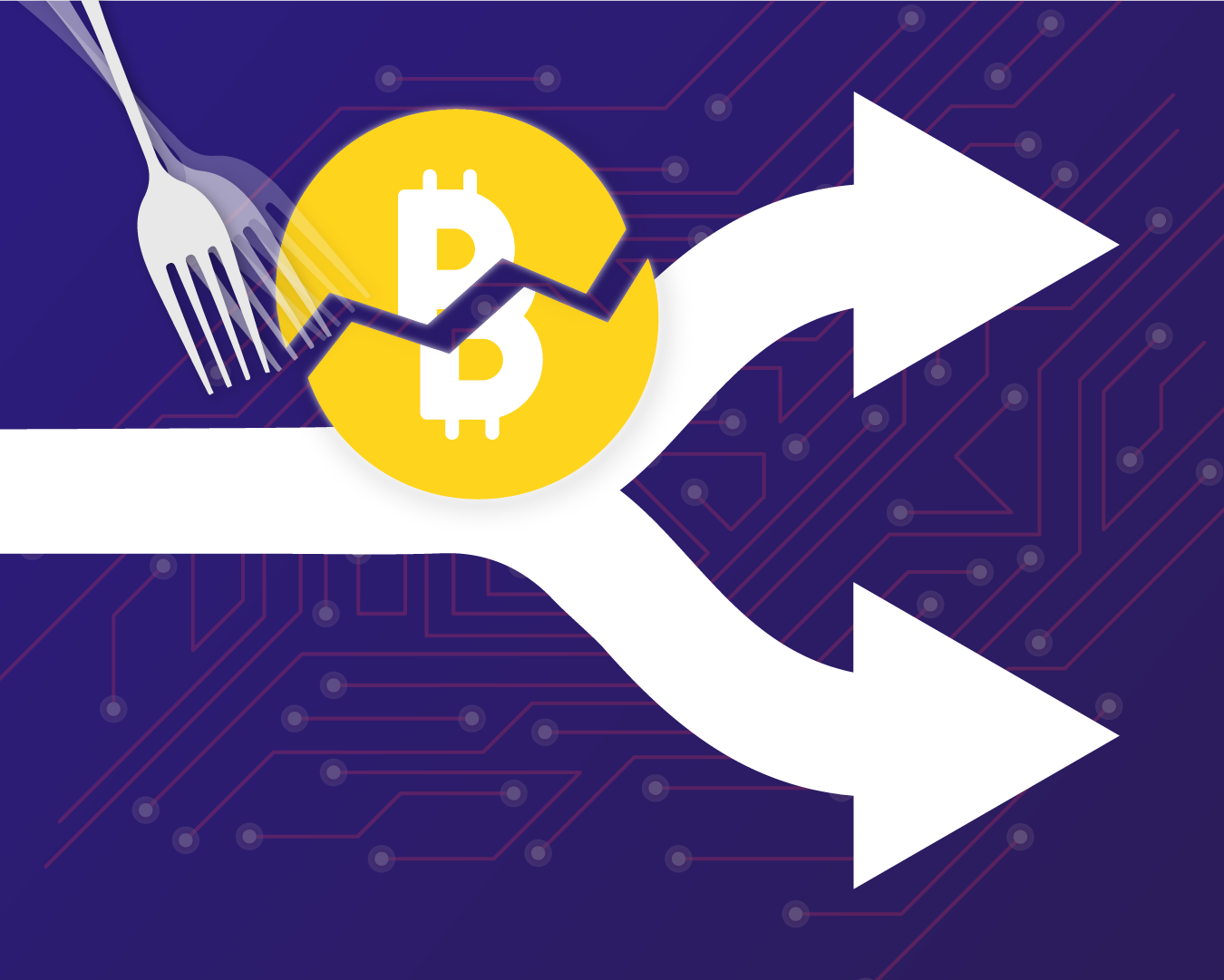Crypto is designed in an open source manner to allow new projects to create a “revised” version of the original blockchain. As Bitcoin is the first cryptocurrency to come into existence, it should come as no surprise that it holds the record for the most forks. In this ultimate list of Bitcoin forks we’re going to cover the top ones that you need to know about.
What Is A Fork?
A fork is a term used to describe when a blockchain is split into two due to a change in the protocol. There are two kinds of forks known as hard and soft forks. Soft forks are when the blockchain splits but the new blockchain is “backward compatible” meaning that the nodes on the old blockchain can still operate on the new chain. A hard fork is when all the nodes on the new chain will need to update their protocols in order to be operable on the new chain.
You can read a more in depth explanation on hard and soft forks here.
The Ultimate List Of Bitcoin Forks
There are approximately 105 forks off the Bitcoin blockchain today, of which a total of 74 are considered to be active today while the remaining 31 are no longer relevant. We’re not going to cover all of these today, only the top ones that are notable in changing the cryptocurrency landscape. The first of which is:
Litecoin (LTC)
Considered to be one of the more successful Bitcoin forks, Litecoin created its own version of the original cryptocurrency by reducing block sizes and transaction times. The founder, Charlie Lee, opted to reduce the transaction time of Bitcoin by a quarter resulting in 2.5 minutes for block creation. He also increased the maximum supply to 84 million (four times that of Bitcoin, see a pattern here?). Litecoin is currently listed in the top ten cryptocurrencies, the only Bitcoin fork to do so.
Litecoin has also undergone a number of hard forks itself, creating a few notable coins you might recognise (a few maybe not). Some notable hard forks include: Dash (DASH), Monacoin (MONA), Einsteinium (EMC2), Feathercoin (FTC), LitecoinCash (LCC), CloakCoin (CLOAK) and Junkcoin (JKC). Junkcoin was later forked to create Lukycoin (LKY) which was forked again to create the infamous Dogecoin (DOGE). Dogecoin remains a cult favourite with many influencers singing its praises from time to time, causing a spike in its market cap. DOGE is currently ranked as number 14 in the list of cryptocurrencies with the highest market cap ($6.4 billion).
Dash on the other hand was later forked to create PIVX (PIVX) which was again forked to create Blocknet (BLOCK).
Bitcoin Cash (BCH)
Bitcoin Cash originated from a disagreement in the Bitcoin community on where the crypto was headed. In 2017 the blockchain was split and Bitcoin Cash was created. The new blockchain incorporated bigger blocks to allow for a higher transaction capacity, lower fees and faster payments. This road soon led to another fork, with Bitcoin S.V. (Satoshi’s Vision) being created in November 2018. Bitcoin Cash remains the dominant cryptocurrency of the two, and currently sits at number 11 of the biggest cryptocurrencies by market cap.
Zcash (ZEC)
Forked in 2016, Zcash is one of the more well known privacy focused cryptocurrencies. The network offers users two options when executing a transaction: transparent, the same as Bitcoin transactions; and shielded, which leverage “zero-knowledge succinct non-interactive arguments of knowledge” technology. The coin is currently sitting just outside of the top 50 cryptocurrencies at #52.
The Zcash blockchain was later forked to create Komodo (KMD) and Zclassic (ZCL). The Zclassic blockchain was forked again to create Bitcoin Private (BTCP) and ZenCash (ZEN).
Peercoin (PPC)
The lesser known Peercoin was forked off the Bitcoin blockchain in 2012 and offered a hybrid of Proof of Work (PoW) and Proof of Stake (PoS) systems. This innovative network led to a number more forks on the network, including Hshare (HSR), Nexus (NXS) and Novacoin (NVC). Novacoin was also forked several times, leading to Vertcoin (VTC), BitcoinDark (BTCD) and Blackcoin (BLK). Creating a fifth generation network from the original Bitcoin blockchain, both Stratis (STRAT) and Greencoin (GRE) were forked from the Blackcoin network.
And More
Bitcoin has been around for a little over a decade now, so to have this number of forks is not a huge surprise. For the sake of making this the ultimate list of Bitcoin forks, here are a few more forks off the Bitcoin blockchain that weren’t mentioned above: Qtum (QTUM), Bitcoin Diamond (BCD), Decred (DCR), DigiByte (DGB), Syscoin (SYS), Reddcoin (RDD), Elastos (ELA), Emercoin (EMC), Groestlcoin (GRS), NavCoin (NAV), and Viacoin (VIA).
Buying Bitcoin And Altcoins
Get started with as little as $20 and easily buy Bitcoin and other cryptocurrencies using a wide range of payment options, including bank transfer, credit or debit card.
_______________________________________________________
Oobit Technologies Pte, 50 Raffles Place #37-00 Singapore Land Tower, Singapore (048623). is a company registered in Singapore (no:201716443G), that has been approved as Appointed Representative of Oobit Technologies OÜ, Harju maakond, Tallinn, Lasnamäe linnaosa, Väike-Paala tn 2, 11415, (no: 14852617 ). Which is authorized and regulated by the FIU (no: FVR001421 and FRK001304).

